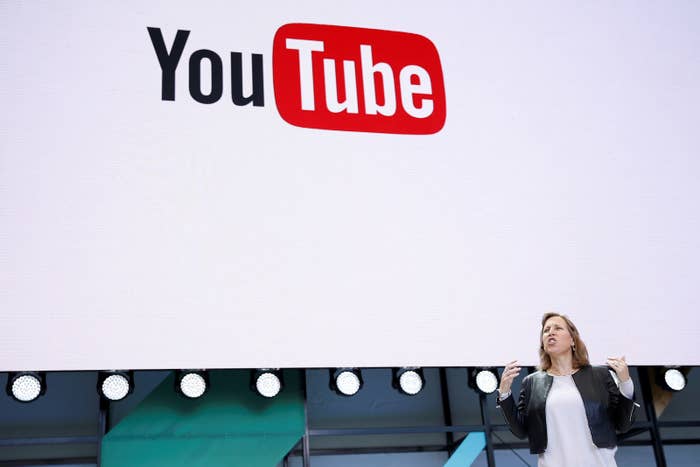
Several major advertisers revolted against YouTube in March, saying they would pause or even cancel their YouTube advertising because the company was placing ads on obscene or hateful videos whose content was decidedly brand-unfriendly. But all those pulled ads appear to have had little effect on the revenue of YouTube's parent company, Alphabet.
The company said today that its second-quarter revenue, which is largely made up of ads placed on Google, YouTube, and all over the internet, was $26 billion. That's up 21% from the second quarter of last year and above what analysts had expected for the year.
For advertising specifically, revenue grew from $19.1 billion to $22.7 billion, an 18% jump. "Advertising revenues benefited from the strong performance which was led in particular by tremendous results in mobile search with a strong contribution from YouTube," Alphabet's chief financial officer Ruth Porat said on a call with analysts.
In March, towards the end of Alphabet's first quarter, advertisers and major newspapers seemed to agree that Google and YouTube had a serious problem. Many news outlets worked to dig up ads placed next to racist or offensive content and reported on the subsequent advertiser pullback.
JPMorgan Chase, AT&T, Johnson & Johnson, and Lyft were some of the big brands that said they were pulling ads. A Lyft ad had shown up in a YouTube video made by the skinhead group Keystone United; AT&T said that it was "concerned that our ads may have appeared alongside YouTube content promoting terrorism and hate."
In response Google said it would hire new staff to more effectively flag content and make sure advertisers' dollars were only spent to show up on YouTube content that was only, at worst, offensive aesthetically, not morally. YouTube also instituted a new policy that ads would not be placed on YouTube creators' channels until they got 10,000 views across their videos. YouTube said the policy "allows us to confirm if a channel is following our community guidelines and advertiser policies" and "gives us enough information to determine the validity of a channel."
Analysts at Citi said that YouTube "could still face monetization headwinds related to the 'hate speech videos' issue that started in late March" — but that data wasn't in Alphabet's earnings, or at least there was not a big enough change in YouTube advertising revenue to share. Instead, Porat said that "the biggest contributors to growth again this quarter were mobile search and YouTube," and Google CEO Sundar Pichai touted YouTube's massive viewership, specifically "1.5 billion monthly viewers" and people watching "on average, 60 minutes a day on their phones and tablets."
Alphabet's first quarter ended in March, so it's also possible that the company was able to convince some big advertisers to start buying again as the second quarter started or that it was able to boost buying from other brands.
The bulk of Alphabet's advertising revenue comes from people clicking on ads, largely from search. The number of "paid clicks" grew 61% over the past year and 15% from the first quarter of this year, surpassing analyst expectations, while the amount paid per click fell (thanks to the increase in ad inventory) by 23%, in line with analyst expectations.
